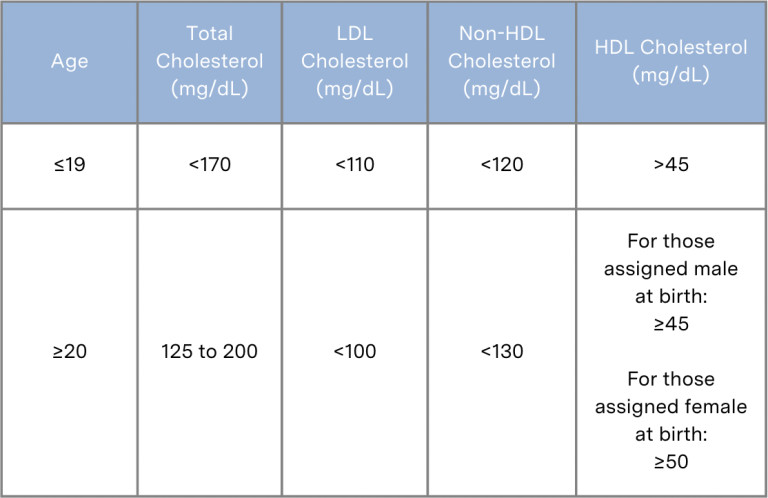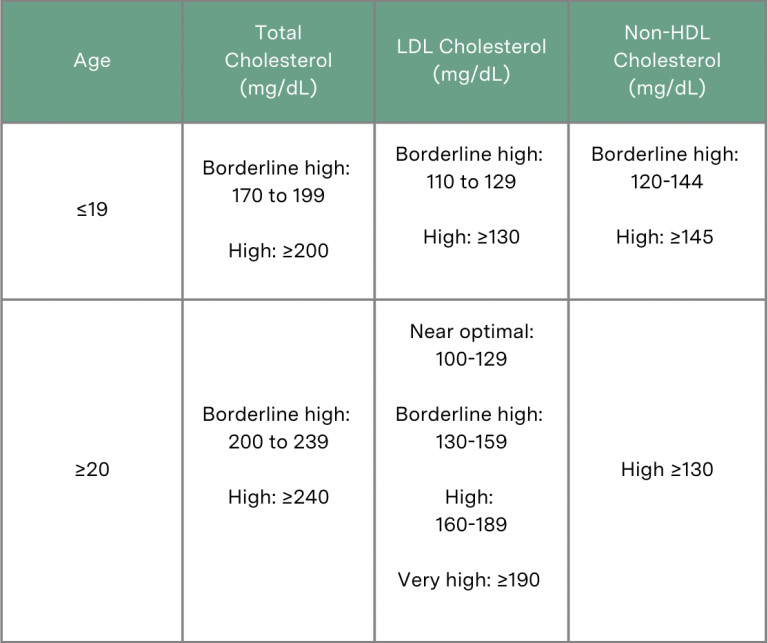Cholesterol and triglycerides are types of fats (lipids) that are vital for cell membrane formation, hormone production (estrogen, progesterone, and vitamin D), and long-term energy storage. A lipid panel is a common blood test that measures the amount of cholesterol and triglycerides present in your blood.
Why It’s Important To Check Your Cholesterol Levels
While some fats are essential for good health, high cholesterol levels can put you at risk for heart disease. Too much cholesterol can lead to plaque buildup in the walls of your arteries, a condition called atherosclerosis. Depending on the affected artery, atherosclerosis can lead to serious complications, including:
Coronary artery disease, which can cause chest pain, a heart attack or heart failure.
Carotid artery disease, which can cause a transient ischemic attack (TIA) or stroke.
Aneurysms.
Peripheral artery disease, which can cause blood clots in different parts of your body.
Chronic kidney disease.
High cholesterol has no symptoms, so many people aren’t aware when their cholesterol is too high. Regularly examining your cholesterol levels is important for the prevention and early treatment of atherosclerosis and its complications. The American Heart Association (AHA)2 has a helpful tool you can use to calculate your risk for a heart attack or stroke.
What Your Lipid Panel Is Measuring
Your lipid profile will usually consist of seven numbers, which includes:
Total cholesterol level:
This number represents the total amount of cholesterol in your blood. It includes both low-density lipoprotein (LDL) cholesterol and high-density lipoprotein (HDL) cholesterol.
HDL level:
An HDL cholesterol test measures the amount of high-density lipoprotein, or “good cholesterol,” in your blood. This type of cholesterol absorbs extra cholesterol found in your blood and carries it back to the liver, where it gets removed from the body.
A higher level of HDL cholesterol is associated a decreased risk for heart disease.
LDL level:
An LDL cholesterol test measures the amount of low-density lipoprotein, or “bad cholesterol,” in your blood. This type of cholesterol carries cholesterol to your cells and arteries.
High LDL cholesterol levels can promote plaque build up in your arteries.
VLDL level:
A VLDL cholesterol test measures the amount of very-low density lipoprotein in your blood. This is another type of “bad cholesterol” that carries triglycerides in your blood.
A high level of VLDL can promote further fat build up in your arteries.
Triglyceride level:
Triglycerides are a type of fat that comes from the food we consume. They are stored in fat cells in the body and are used for energy. A high triglyceride level can put you at risk for atherosclerosis and other complications.
Non-HDL cholesterol level:
This value represents the total amount of cholesterol in your blood that isn’t “good cholesterol” (or HDL).
The formula is simply: Total cholesterol - HDL = Non-HDL cholesterol
Cholesterol-to-HDL ratio:
This value is the ratio between the total amount of cholesterol and HDL in your blood. To calculate this number, divide total cholesterol by HDL.
Most healthcare providers recommend a ratio below 5:1, as higher ratios are indicative of a higher risk of heart disease.
What Your Cholesterol Levels Mean
The table below shows normal cholesterol levels.
Remember: LDL cholesterol goals may look different if you have heart disease or other risk factors, so it’s always important to go through your test results with your provider.
Normal Cholesterol Levels

Source: Cleveland Clinic
The table below shows cholesterol levels that are considered to be high or higher than normal.
High Cholesterol Levels

Source: Cleveland Clinic
How Often You Should Get Your Cholesterol Checked
Your healthcare provider will provide a recommendation for how often you should get your cholesterol checked.
Below is the general recommendation for testing.
For men:
Age 20 to 44: Every five years.
Age 45 to 65: Every one to two years.
Age 65+: Every year.
For women:
Age 20 to 54: Every five years.
Age 55 to 65: Every one to two years.
Age aside, your doctor may also recommend more frequent testing if:
You have a family history of heart disease.
You have heart disease.
You have risk factors for heart disease, including: poor diet, obesity, lack of exercise, smoking, and alcohol.
How To Prevent High Cholesterol
There are many lifestyle changes you can adopt to lower cholesterol levels or to prevent high cholesterol. These include:
Consuming less sodium (salt).
Choosing to eat foods that are low in saturated and trans fat, such as: lean meats, fat-free or low-fat milk, seafood, cheese, yogurt, fruits, and vegetables.
Limiting foods that are high in saturated fat, like cakes, biscuits, fatty cuts of meat, and sausages.
Incorporating more foods that are naturally high in fiber (like oatmeal and beans) and unsaturated fats (like avocado, olive oil, and nuts) into your diet.
Maintaining a healthy weight, especially visceral fat levels.
Quitting smoking.
Limiting or eliminating alcohol intake.
Getting adequate physical activity.
If your cholesterol levels are high, your provider may prescribe medication to bring these levels down. Read about treatment options here.









